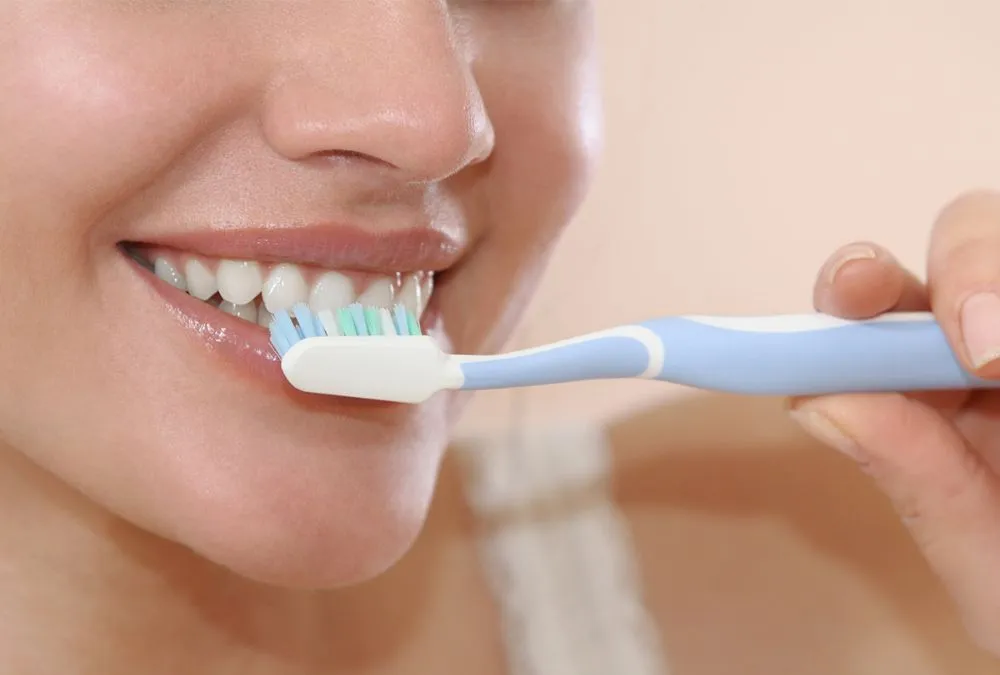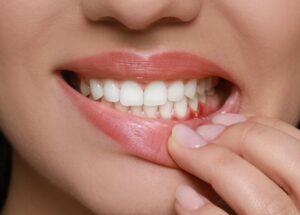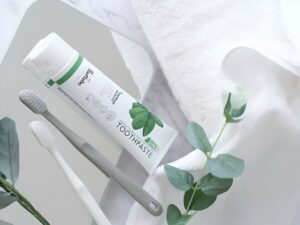Essential Insights for a Sparkling Smile
- Soft bristles are non-negotiable: Hard brushes? They damage gums and enamel.
- Angle for success: A 45-degree tilt targets hidden plaque near the gumline.
- Time is your ally: Two minutes, twice daily, is the golden standard. No exceptions.
In this guide, you’ll learn how to brush your teeth properly—soft bristles, a 45-degree angle, and two
Alright, so we all brush our teeth, right? It’s a thing we do—every morning and every night. But are you actually doing it right? Knowing how to brush your teeth properly can be the difference between healthy gums and hidden damage. You might be surprised; a lot of us have picked up some pretty wonky habits over the years. Brushing incorrectly can actually be bad for them. Yep, you heard me. Bad.
The Sneaky Enemy: Plaque and Why It Matters
Understanding the Silent Threat to Your Oral Health
Think about it. That plaque? It’s sneaky. It builds up. And if you’re not getting rid of it properly, it hardens into tartar. Gross. And tartar leads to gum disease. Nobody wants that. So, let’s dive into how to actually brush your teeth like a pro. It’s not rocket science, but it does take a little know-how. This ain’t just about fresh breath. It’s about your health.
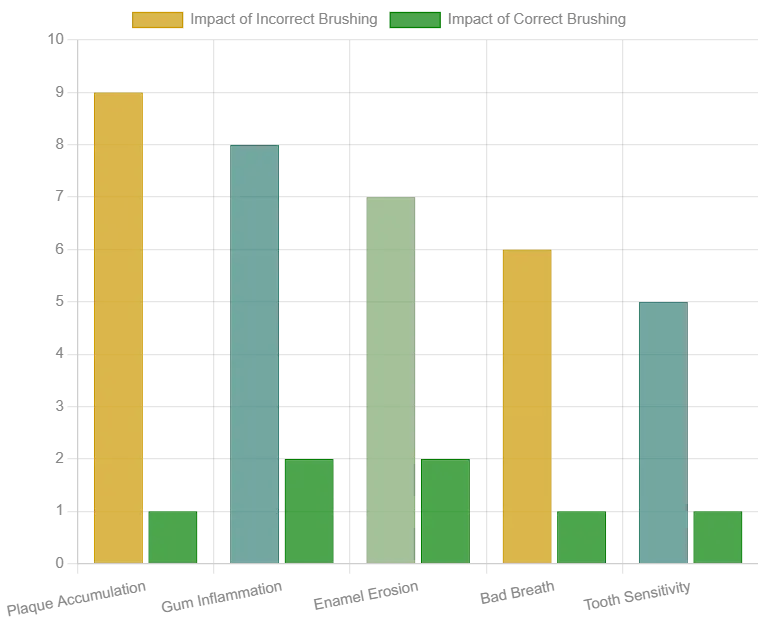
This bar chart illustrates the stark difference in oral health outcomes between incorrect and correct brushing techniques. Incorrect brushing significantly contributes to plaque accumulation, gum inflammation, and enamel erosion, leading to issues like bad breath and tooth sensitivity. In contrast, proper brushing dramatically minimizes these risks, underscoring its crucial role in maintaining optimal oral hygiene.
Choosing Your Tools: The Right Brush and Paste
Your Arsenal for Optimal Oral Hygiene
First off, the brush itself. You want soft bristles. Seriously. Medium or hard bristles? They can totally mess up your gums and tooth enamel. So, soft is the way to go. And that toothpaste? Make sure it’s got fluoride. It’s like a shield for your teeth. This stuff—it’s non-negotiable if you want strong pearly whites and to fight cavities. Jake learned that the hard way. Now, brush twice daily. Morning and night. Don’t rush it.
How to Brush Your Teeth : Technique That Transforms
Mastering the Motions for a Cleaner Mouth
The 45-Degree Angle: Your Secret Weapon
Here’s how to brush your teeth step by step: angle the brush at 45°, use short gentle strokes, and sweep along the gumline
Now, the technique. This is where it gets interesting. Forget just scrubbing away like you’re cleaning a dirty pan. It’s more of a dance, really. You want to angle that brush. At a 45-degree angle, aiming towards your gum line. That’s where the real action happens. You’re trying to get under that gum line to sweep away all the baddies. Why? Because plaque loves to hide right at that gum line, and you gotta reach it. Don’t brush straight on at 90 degrees; you’ll miss the dirty spots and might hurt your gums.
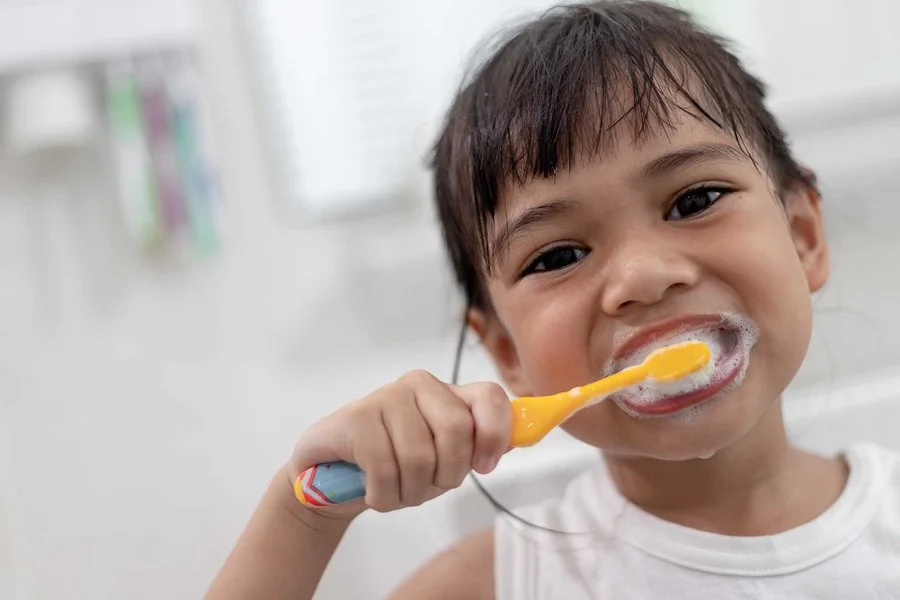
Proper brushing technique involves angling the brush correctly to reach the gumline.
Gentle Strokes: A Kinder, More Effective Clean
Short, gentle strokes work best—think tiny back-and-forth motions covering each tooth’s outer, inner, and chewing surfaces. Use short, gentle strokes. Think circular motions. Or a little back and forth. Just be gentle, okay? Brushing too hard is a big no-no. It can wear down your enamel. And nobody wants that. When you hit the inside of your front teeth, flip the brush vertical and swipe up and down. Sounds fussy? Yeah, but it works.
Don't Forget the Tongue!
And hey, give your tongue a little love too. It’s a magnet for bacteria. We want that gone. It’s a bacteria hideout and can kill your fresh breath if ignored. A quick sweep there boosts freshness. You’ll feel the difference. Jake wishes he knew.
How to Brush Your Teeth: How Long and How Often
Making Every Second Count for Your Oral Health
Brush for two full minutes, that’s the magic number. Don’t cut it short. Aim for twice a day; set a timer or play a quick song if it helps. Divide the time evenly among the four zones of your mouth: upper left, upper right, lower left, and lower right. Avoid rushing, your teeth deserve the attention. It’s not a race, but it’s not a nap either.
This video, “The Perfect Oral Health Care Routine (3 easy steps in order)”, offers a comprehensive guide to establishing an effective dental care routine at home. It reinforces the core principles of brushing, flossing, and regular dental visits, providing visual demonstrations and expert tips that complement the techniques discussed here. It’s a great resource for anyone looking to refine their daily oral hygiene practices.
Beyond Brushing: Complementary Practices
Enhancing Your Oral Hygiene Regimen
Gentle Strokes: A Kinder, More Effective Clean
Don’t forget floss. Between every tooth. It’s tiny, but mighty. Plaque loves those hidden crevices. One daily session is enough to keep trouble away. Floss after, if you can. Not part of brushing, but ties in. Mix it up: formal step says clean between teeth daily. Casual tip? Do it before bed, relaxed.
Rinsing: When and How Much?
After you’re done, spit out the excess toothpaste. But here’s a pro tip: don’t rinse your mouth immediately. Letting that little bit of toothpaste sit there helps keep the fluoride working its magic. It’s like a little extra protection. Ever tried not rinsing right after brushing? Keeps the fluoride working longer. Jake’s dentist yelled at him for that mistake. After flossing, you can rinse if you want, but most folks skip a big rinse to keep fluoride around. Then spit. That’s it.
Common Mistakes to Avoid
Pitfalls That Undermine Your Brushing Efforts
Oh, and be nice to your gums. Pressing like you’re scrubbing floors? Stop. Too much force irritates and can cause gum trouble. Brushing too hard is a big no-no. It can wear down your enamel. And nobody wants that.
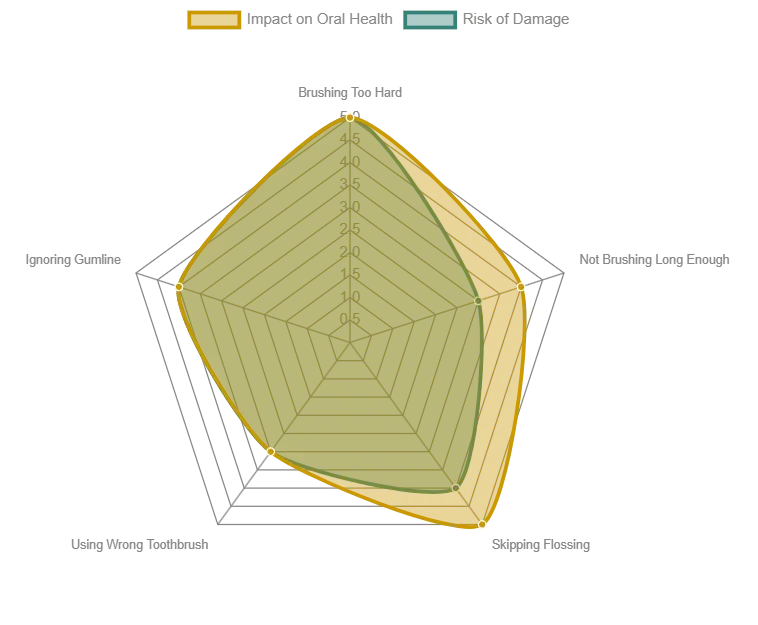
This radar chart visually represents the impact and risks associated with common brushing mistakes. Brushing too hard carries the highest risk of damage, while not brushing long enough and skipping flossing significantly impact overall oral health. Using the wrong toothbrush and ignoring the gumline also contribute to poor outcomes, highlighting the interconnectedness of proper technique and tool selection.
Maintaining Your Tools and Your Progress
Pitfalls That Undermine Your Brushing Efforts
Rinsing: When and How Much?
Rinse mouth and brush—cleaning your toothbrush afterward is crucial. Gross buildup on your brush? Nope. Replace your toothbrush every 3–4 months. If bristles look worn, swap sooner.
Regular Dental Check-ups: Your Professional Partners
And don’t forget, even if you’re a pro-brusher at home, visit your dentist and hygienist regularly. They spot what you can’t. This ain’t complicated. It’s practical and repeatable, your daily shield against cavities, gum disease, and bad breath.
